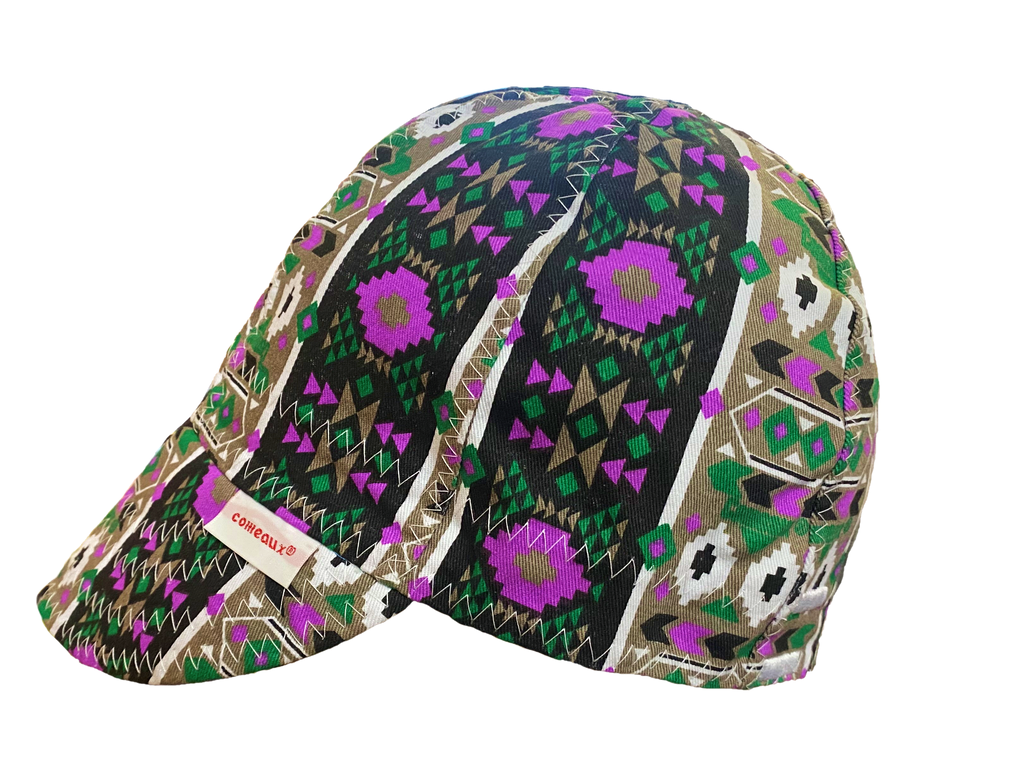While 89.9% of welders in America are men, the field is becoming more and more welcoming to women, especially as the demand for more skilled workers continues to rise. In fact, the U.S. Bureau of Labor Statistics predicts that over 452,000 women welders will be in the workforce by 2030. But how did women even begin getting a foot in the door of factories in the first place? In honor of Women in History Month, Comeaux Caps is taking a look back at the progress made over the decades.
Who were the first female welders?
Women taking it upon themselves to enter the workforce in male-dominated industries is nothing new. While many are familiar with Rosie the Riveter, a fictional character created to recruit more women workers during WWII, did you know that there were many real-life women that inspired her existence? And that some of them were welders?
Many haven’t even heard of Wendy the Welder, a lesser-known cousin to Rosie. Wendy represented those who worked in West Coast shipyards producing vessels during WWII.
Sarah A. Erwin was the first-recorded woman in the United States to be employed in the industrial ship construction field when she took up her role at Hog Island in 1918. While she was initially put to the test in the electric welding department, she excelled and eventually opened up 30 more jobs for women in the company.
According to a 1918 article in the Washington Herald, Erwin and her bench mate Aina Kannisto reportedly learned how to weld in just two weeks, noting that “Few men take to it that quickly.” Kannisto was also quoted saying, “I would rather do electric welding than sell ribbons behind a counter or work in an office. The pay is better, and you have more independence.”
Pre-war, just 1% of the workforce was made up of women, but in 1943, they made up 65%, with 310,000 employed within the U.S. aircraft industry alone. In 1943, there was even a female welder on the cover of Life Magazine, showcasing the rapid shift in the workforce’s gender composition.
What is the outlook for women welders today?
While many women didn’t stay at the forefront of industrial jobs, their response in WWII made it clear that women are capable of putting in hard work and can thrive in any work environment. Furthermore, these icons opened the door for the women of today.
We sat down with Weld.com and North Central Kansas Technical College instructor Danea Buschkoetter to get her perspective on the current outlook of the field. Having been a welder for about 10 years, Danea said she first became interested in the field when she took a welding class in high school and discovered it came easy to her. Throughout her career, she has most enjoyed the opportunity to build things with her hands and has worked on a variety of projects, from a Volvo restoration build with Girl Gang Garage to working 200 ft. in the air as a millwright.
Danea admits that she has faced multiple challenges on her career path being a young female in the field. “The failures that I have experienced have made me step up to be prepared and on my toes,” said Danea. But she encourages other women to not let that stop them. When asked about what advice she would give to another woman interested in welding, she said, “Don’t be scared. You are going to have moments where you question if this is really what you want to do, and if it is, keep pushing. These moments will make you stronger as a person.”
Skilled welders are currently in high demand as many lifelong welders near or enter retirement, oftentimes at a higher rate than workers from younger generations are taking up the mantle. Given this, many are once again turning to the recruitment of women welders. In an NBC news article, Monica Pfarr, executive director of the American Welding Society Foundation said, “We need many efforts across the nation to help fill the gap, and programs like Women Who Weld that focus on a population that we don’t typically attract are really critical.”
Women Who Weld is a nonprofit aiming to close the gender gap in the welding industry by providing low-cost training to women living at or below the poverty line. It offers a chance for women to learn a skill, master it and provide for their families with a stable career.
Women Who Weld is just one example of many initiatives geared toward embracing and empowering women in the welding industry. May women today be inspired by those who paved the way before them. No job is too tough for female hands — anyone who is dedicated to putting in the hard work and training that this skilled labor takes can succeed.










Share:
Stay Warm This Winter